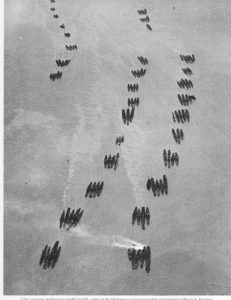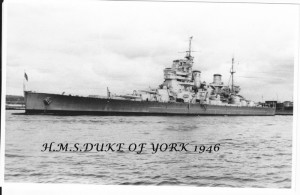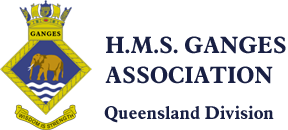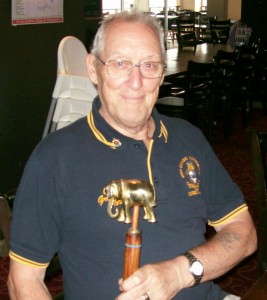Monthly Archives November 2018
Just for interest
 Just interest matter really.
Just interest matter really.
The German U-boat surrender at Harwich,
just opposite Ganges Dec 1918
REMEMBERANCE DAY 2018

LEST WE FORGET
FOR ALL THOSE WHO HAVE FALLEN
ON LAND,SEA AND AIR WE SALUTE YOU.
TO THOSE WHO LOST LOVED ONES OUR HEARTS ARE WITH YOU.
WE THANK YOU FOR OUR FREEDOM. 
HMS GANGES Queensland Division Newsletter Oct – Nov 2018
HMS GANGES ASSOCIATION
Queensland Division
Newsletter No 62
October / November 2018
Welcome aboard everyone,
First thing I want to say is a nice loud ‘Get Well Soon’ to my mate and predecessor, Charlie Greensmith. For those of you that don’t know Charlie has been ill for some time I know every sailor who has ever served regardless of whether they know Charlie or not will wish him well. Also for those that don’t yet know, we have started a GoFundMe page to support Charlie’s medication – there will be a link to that site at the end of the newsletter.
The second thing is to apologize to anyone who received an email/message by phone from my number, apparently, I was hacked and have received several inquiries from friends as some very unsavory messages sent – I have now resolved the security of my phone
MEMBERSHIP RENEWAL
For those wishing to renew their membership the following details were provided by the Treasurer
Account is H.M.S.Ganges Association Queensland.
Westpac Capalaba 034080 380466.
Members $20.00. Associate members $5.
Australia and PNG have agreed to jointly redevelop the Lombrum naval base on Manus Island.
Australian troops will soon have access to a strategically vital naval base on Manus Island, with the federal government agreeing to help Papua New Guinea redevelop the site. Scott Morrison and Peter O’Neill struck a deal on the joint redevelopment in Sydney on Thursday afternoon.
The prime ministers also inked an agreement on a long-term police partnership and committed to annual leader-to-leader talks.It is expected PNG will retain ownership of the Lombrum naval base but Australian personnel will live and work on site.
From Australia’s perspective, the benefits are two-fold. It will allow Australian ships to use the port and expand the navy’s footprint in the Pacific. But it also shuts the door on Chinese ambitions to redevelop the Manus port – a prospect which had alarmed Australian defence officials. Australia is already spending $5 million to upgrade a wharf at the facility as it prepares to “gift” PNG four patrol boats.
Chief of Navy Michael Noonan described the deal as “hugely important”. He expects Australian warships will make use of the port. “I think ultimately what that might look like in terms of the nature of the ships, that’ll take a little while to get some clarity around that,” Vice Admiral Noonan told reporters in Canberra on Thursday. “It’s a pretty small place and the facilities there wouldn’t take an LHD (Landing Helicopter Dock), for example, but in forward to seeing what the development provides.”
Australia commissions second Hobart-class destroyer
The Royal Australian Navy (RAN) has taken another step towards bolstering its multi-layered system of at-sea defence against aircraft and missiles by commissioning its second Hobart-class air warfare The vessel, HMAS Brisbane (41), was officially inducted on 27 October in a commissioning ceremony at Garden Island Naval Base, Sydney.
Brisbane is part of a three-ship programme to replace the RAN’s fleet of Adelaide-class (US Oliver Hazard Perry design) guided-missile frigates that have been in service since the early 1990s. First-of-class AWD, HMAS Hobart (39), was commissioned in September 2017.
HMAS Brisbane, the second Australian-built Hobart-class guided missile destroyer, at its commissioning ceremony on 27 October 2018. Source: Commonwealth of Australia
Key Points
- The Royal Australia Navy has commissioned its second Hobart-class air warfare destroyer
- Vessel bolsters the service’s collaborative defence capabilities against hostile aircraft, and precision-guided munitions
The Hobart class is derived from Navantia’s F-100 Alvaro de Bazan-class frigate design, and incorporates the Aegis combat system. The vessel’s suite of sensors includes the Lockheed Martin and Raytheon AN/SPY 1D(V) phased array radar, and the Northrop Grumman AN/SPQ-9B surface search radar.
The 6,350-tonne class has an overall length of 146.7 m, an overall beam of 18.6 m, and a hull draught of 4.9 m. It is powered by two General Electric LM2500 gas turbine, and two Caterpillar diesel engines in a combined diesel or gas (CODOG) configuration, and can attain a top speed of 28 kt, and a standard range of 5,000 n miles at 18 kt.
The vessel is armed with the 48-cell MK 41 vertical launch system (VLS) that can deploy Standard Missile-2 medium-range Block IIIA (SM-2MR Block IIIA), and SM-2MR Block IIIB long-range surface-to-air missiles. This VLS can also launch the Raytheon RIM-162B Evolved Seasparrow Missile (ESSM), which has a maximum range of about 30 n miles, further augmenting the class fleet-area air defence capabilities.
Henry VIII’s Restored Flagship Opens to Public
On July 19, 1545, England’s King Henry VIII stood on the ramparts of Southsea Castle and watched as his country came under attack. The monarch gazed out from his newly constructed citadel, which guarded the entrance to Portsmouth Harbor on England’s south coast, at the greatest foreign threat ever faced by his country during his long reign. Although his navy was badly outnumbered by a fleet of 200 French ships that was even larger than the Spanish Armada that would strike nearly a half-century later, Henry VIII took comfort as he watched his beloved warship, Mary Rose, engage the invaders.
The hull of Henry VIII’s warship, Mary Rose. (Credit: Olivia Harris/Getty Images)
Henry VIII had very little naval power in his arsenal when he assumed the throne in 1509, which left England vulnerable to a waterborne attack from the European continent. The king ordered a military buildup, which included the construction in Portsmouth of the state-of-the-art, carrack-type warship Mary Rose, built with wood harvested from 600 enormous oak trees. Henry VIII’s flagship—which he christened Mary Rose perhaps in honor of his sister, Mary Tudor, but more likely as an homage to the Virgin Mary—became one of the most feared on the open seas.
After surviving three wars with the French, the 34-year-old warship was a grizzled veteran by the time she was sent out in July 1545 to once again fight the enemy at the Battle of the Solent. From his perch Henry VIII watched in horror, however, as his nautical pride and joy suddenly rolled to her starboard side. Seawater gushed through the open gun ports, and in quick order Mary Rose slipped below the cobalt surface of the Solent, the strait separating the Isle of Wight from mainland England, taking more than 400 men with her. Only 35 survived the sinking of the seemingly invincible Mary Rose. Even today the cause of the ship’s demise—whether a mistake by the captain or crew, enemy fire or an ill-timed gust of wind—remains a mystery.
For centuries, Mary Rose rested undisturbed on the seabed until it was rediscovered in 1971. Divers found that the warship’s muddy grave had preserved the wreck and prevented her erosion. In 1982, as 60 million viewers around the world tuned in on television to watch, Mary Rose was brought to the surface for the first time in 437 years. The following year, what remained of the solid oak ship was put on public display in Portsmouth, the city from where the warship had been launched in 1511.
Inside a massive room in which temperature and humidity were carefully regulated, conservators began an extensive $44 million project to preserve Mary Rose’s remains. For nearly 20 years, conservators sprayed every inch of her solid oak beams with a fine mist of cold water and applied polyethylene glycol to the hull. Common pond snails were even used to eat wood-degrading organisms while leaving the oak itself untouched. Dr. Eleanor Schofield, the project’s head of conservation, told the Guardian newspaper that controlled air-drying removed more than 100 tons of water from the hull and surrounding air in the last three years. As the conservation work continued, visitors to the Mary Rose Museum could only sneak a peek at the wooden hulk through small viewing windows, and even then much of the vessel was surrounded by a network of scaffolding, pipes and air ducts.
The warship, however, has finally reached a stable state and the conservation work has been concluded. After a six-month closure in which the scaffolding and drying ducts were removed from the wreckage, the Mary Rose Museum has reopened following the unveiling of the restored flagship to the public exactly 471 years to the day after she sank from Henry VIII’s sight. After entering through an airlock, museum visitors on an elevated viewing platform can now come face-to-face with the historic ship without any obstructions, including glass. In addition to seeing the only 16th century warship on display in the world, museum visitors can view some of the 20,000 artifacts that have been salvaged from the wreckage site.
“So many of us, we saw the wreck come up so we have had an emotional connection with the ship for very many years,” Helen Bonser-Wilton, chief executive of the Mary Rose Trust, told the Guardian newspaper. “But to see her like this uninhibited for the first time is huge. I don’t think people realize how big she is. We’ve been spraying her with water, with chemicals, drying her. Nobody has ever really seen Mary Rose since Henry VIII in the way you’re seeing her now. You’re breathing the same air as Henry VIII’s warship.”
Now a bit about Charlie’s first sea posting..
HMS Torquay was a Type 12 Whitby-class frigate of the British Royal Navy. They were the first frigates to have the “V” form hull. This evolutionary design made it possible to be driven in head sea without the usual slamming which occurs with conventional destroyers of the time. Each frigate cost 3.5 million pounds and the first ship completed was Torquay in May 1956.
Design
The Whitbys were designed as specialist anti-submarine warships, intended to counter fast modern diesel-electric submarines. As such, the design was required to reach a speed of at least 27 knots (31 mph/ 50 km/h), maintaining high speed in rough weather conditions and have a range of 4,500 nautical miles (5,200 mi/ 8,300 km) at 12 knots (14 mph/ 22 km/h). To meet these requirements, the Type 12s had a new hull form and, unlike the contemporary Type 41 anti-aircraft and Type 61 air direction frigates, were powered by steam turbines.
Torquay was 370 feet 0 inches (112.78 m) long overall and 360 feet 0 inches (109.73 m) at the waterline, with a beam of 41 feet 0 inches (12.50 m) and a draught of 11 feet 0 inches (3.35 m) forward and 13 feet 0 inches (3.96 m) at the propellers. The ships were powered by the new Y-100 machinery in which the ship’s boilers and steam turbines were designed as a closely integrated set of machinery to increase efficiency. Two Babcock & Wilcox water-tube boilers fed steam at 550 pounds per square inch (3,800 kPa) and 850 °F (454 °C) to two sets of geared steam turbines which drove two propeller shafts, fitted with large (2 feet (0.61 m) diameter) slow-turning propellers. The machinery was rated at 30,000 shaft horsepower (22,000 kW), giving a speed of 29 knots (33 mph; 54 km/h). Crew was about 189 when operated as a leader and 152 as an ordinary ship.
A twin 4.5-inch (113 mm) Mark 6 gun mount was fitted forward, with 350 rounds of ammunition carried, with close-in armament of a stabilised STAAG (Stabilised Tachymetric Anti-Aircraft Gun) twin Bofors 40 mm L/60 gun mount aft. The design anti-submarine armament consisted of twelve 21-inch torpedo-tubes (eight fixed and two twin rotating mounts) for Mark 20E Bidder homing anti-submarine torpedoes, backed up by two Limbo anti-submarine mortars fitted aft. The Bidder homing torpedoes proved unsuccessful however, being too slow to catch modern submarines, and the torpedo tubes were soon removed.
The ship was fitted with a Type 293Q surface/air search radar on the foremast, with a Type 277 height-finding radar on a short mast forward of the foremast. A Mark 6M fire control system (including a Type 275 radar) for the 4.5 inch guns was mounted above the ship’s bridge, while a Type 974 navigation radar was also fitted. The ship’s sonar fit consisted of Type 174 search, Type 170 fire control sonar for Limbo and a Type 162 sonar for classifying targets on the sea floor.
Operational Service
Torquay was laid down at Harland & Wolff‘s Belfast shipyard on 11 March 1953. The ship was launched by Lady Monkton on 1 July 1954, and completed on 10 May 1956.
On commissioning Torquay joined the 5th Frigate Squadron based at Portsmouth, becoming leader of the squadron on 28 August that year. She left for the Mediterranean at the end of October and took part in the Suez operation in November 1956. In December Torquay carried out patrols off Cyprus, and remained in the Mediterranean in the early part of 1957, returning to Portsmouth on 16 May 1957. In 1958 she was diverted to Tobruk following the assassination of the Iraqi Royal Family.
Between 1967 and 1971 Torquay was one of the frigates allocated to the Dartmouth Training Squadron and between 1972 and 1985 Torquay served as a navigation training ship based in Portsmouth. In 1971 the ship was refitted with a solid main mast (as opposed to a lattice mast) and a large training navigation room was built where the forward set of triple-barrelled mortars used to be located (leaving one set of mortars). She was also fitted to undertake trials of CAAIS (Computer Assisted Action Information System). Torquay attended the 1977 Silver Jubilee Fleet Review off Spithead when she was part of the 2nd Frigate Squadron.
Replaced by the Leander-class frigate Juno as the navigation training vessel for the Royal Navy, Torquay paid off on 23 March 1985. At the time she was the longest serving ship of her class and the oldest frigate in the fleet. She was sold for scrap in 1987 and left Portsmouth on 1 July 1987 to be broken up in Barcelona, Spain.
We will take a look at Charlie’s other sea posting in future editions, if you would like one of your vessels posted here just drop me a quick email
Link to Charlie’s secure GoFundMe page –
https://www.gofundme.com/charlie039s-time#
That’s it for this newsletter my fine collection of matelots wherever you are in Queensland or the rest of the world, stay safe and somewhat soberish….
To contact Scotty
Graham Slaney
1 Harlequin Court
BURRUM HEADS Qld 4659
Phone 0434896017
e-mail scottyslaney@gmail.com
P.S. If you no longer wish to receive newsletters from sunny Queensland, please advise and I will remove your details from the list. Until we meet again, fair winds to you all..


 MERRY CHRISTMAS AND A HAPPY 2019
MERRY CHRISTMAS AND A HAPPY 2019 AND THE FELLOWSHIP OF GANGES REMAIN STRONG.
AND THE FELLOWSHIP OF GANGES REMAIN STRONG. CHARLIE GREENSMITH.
CHARLIE GREENSMITH.